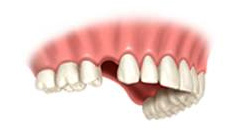 SINGLE TOOTH MISSING
SINGLE TOOTH MISSING
Benefits of an all-ceramic crown on implant:
When both the tooth and root are damaged, the best permanent replacement is a dental implant in conjunction with a ceramic crown. This solution both looks and functions just like a natural tooth.
An implant replacement involves the extraction of the tooth followed by a period of healing. The implant screw (fixture) is then placed into the bone and covered by the gums during a short surgical procedure (stage 1 surgery). The implant fixture is left covered for a period of several months to allow the bone to heal and the implant is then uncovered (stage 2 surgery) in order to fabricate the crown which is done 2-3 weeks after the uncovering.
In some cases, a so-called one-stage implant surgery can be performed. This means that all components are installed at a single visit, which may result in a slightly shorter treatment time and minimized pain. Immediate placement of crowns can also be performed in selected cases, although the option for such varies on the clinical considerations reviewed at the time of consultation.
- Independently functioning teeth
- Excellent esthetic result
- Long-term, stable solution
Treatment:
This procedure normally includes multiple visits to the dentist. You should expect to be able to work the day after having the implant installed.
>> View Treatment Procedure
COURSE OF TREATMENT
INSTALLING THE NEW TOOTH – STEP-BY-STEP
The course of treatment described here is one of several options available. Consult your dentist to find out what the best solution is for you, given your specific condition.
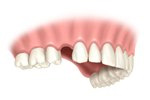 |
|
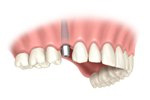 |
1: Before the procedure
The dentist makes a first examination and takes one or more x-rays of the area to prepare for the procedure. |
|
2: Installing the implant
The implant is installed. At this time, a temporary tooth may be provided that allows you eat and function during the healing period. The implant will need a few months to integrate with the jawbone before the next step is taken. |
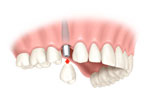 |
|
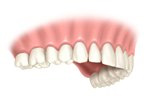 |
3: Attaching the new crown
The final step is the placement of the permanent ceramic tooth. No additional treatment is needed although routine hygiene visits with your dentist are required. |
|
4: End result
You should expect the new tooth to fit and function just like a natural tooth. Do your usual dental hygiene to keep the tooth and gum around it clean and healthy. |
ALTERNATIVES TO AN ALL-CERAMIC CROWN ON IMPLANT
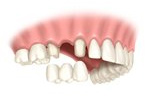 |
Tooth-supported fixed bridge
A traditional bridge involves grinding down adjacent teeth to support the bridge. It is a stable solution with good esthetics and function that is fairly easy to install. However, this alternative has two main disadvantages: continuous bone resorption in the edentulous area, and sacrificing healthy teeth on behalf of the bridge. |
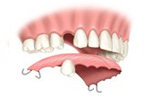 |
Removable partial denture
This is not a permanent alternative to a lost tooth. It is unstable and loosely attached, which may affects both function and comfort. A removable partial denture is made of plastic – a material that can't create the same esthetic result as a ceramic crown. The benefits are few but do exist: adjacent teeth aren't affected. It is easily and quickly installed and relatively inexpensive. |
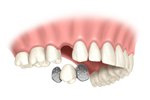 |
Resin-bonded bridge
This alternative has some clear advantages: it is quickly installed, functions well and, since it is made of ceramic, it gives a high esthetic result. Moreover, natural healthy teeth aren't affected. But it is not very permanent. The resin-bonded bridge will eventually come off – probably after just a couple of years – and will then have to be reinstalled. |